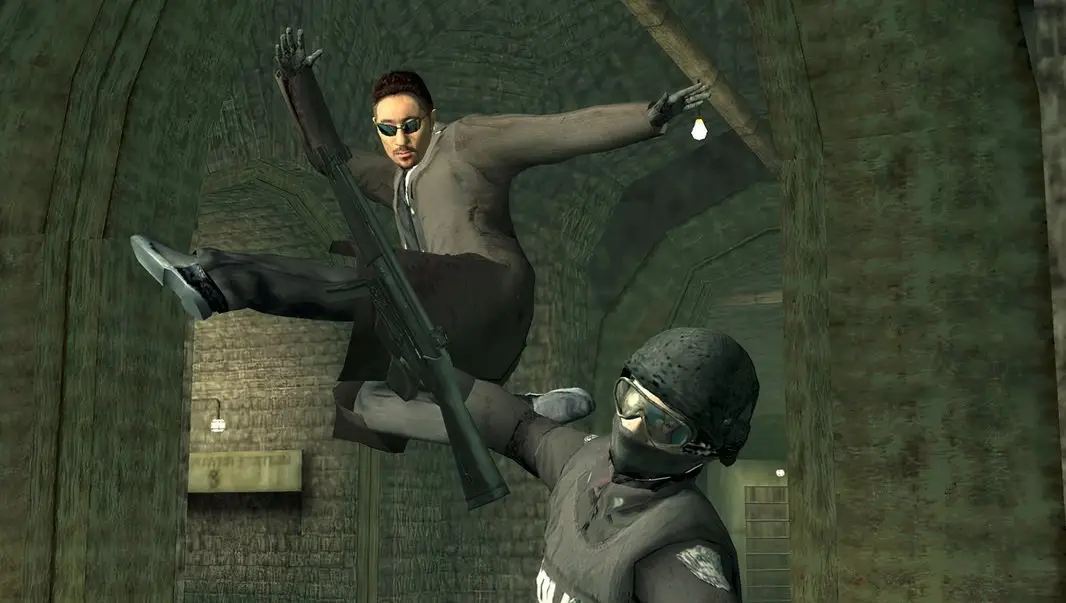Copyright Polygon

There are few video game skills as memorable as Max Payne’s bullet time. The trick brought the thrill of 1999’s The Matrix to video games, letting players slow down time and send Max flying through the air during shootouts. It made the 2001 Remedy game an instant classic that went on to inspire similar mechanics in games like El Paso, Elsewhere. But to this day, I’m sure that most people would tell you that no one has done it quite like Max Payne ever since. I would have agreed with that, but my mind has been opened as of a few weeks ago. I got the idea to revisit Enter the Matrix, the 2003 action game based on the film franchise, on my PlayStation 2. I played it at release on GameCube, but I didn’t think much of the notoriously buggy game at the time. Returning to it in 2025, though, I’ve discovered a combat system that was unbelievably ahead of its time — and it’s all thanks to its slo-mo power. Coming out at a time when movie tie-in games didn’t exactly have a shining reputation, Enter the Matrix tried to punch above its licensed weight class. The Wachowskis were heavily involved, creating over an hour of original footage for the project that featured actors from the films. The intent wasn’t to make a cheap tie-in, but a true Matrix game. Pulling that off would require developer Shiny Entertainment to nail the series’ iconic action. In practice, Enter the Matrix sounded quite a bit like Max Payne. It was a third-person shooter (with a layer of surprisingly fluid kung-fu brawling) where you could slow down time to enter bullet time. That meant that you could dive through the air to gun down enemies, dodge incoming bullets, or just slow things down for the sake of landing a cool kill. It was a novel idea, but Max Payne had taken the wind out of its sails by the time it launched. But on a second playthrough, free from the context of the time, Enter the Matrix’s use of bullet time turns out to be far more complex than I remembered. Using it doesn’t just slow the action down; it gives you access to an entirely different set of skills. You get more powerful combos in hand-to-hand combat that let you palm an enemy to the other side of the room. You don’t just leap through the air, but twist and turn. You feel like Neo (even if you don’t play as him) as you break the laws of video game physics to take down waves of security guards. The power of that system clicked for me in a mundane moment. I found myself in a mailroom, looking for an elevator door. I turned a corner and found it, but it was guarded by two men who started shooting at me. On instinct, I switched on bullet time just to thin the incoming hail of gunfire as I ran towards them firing dual uzis. I happened to be running by a wall when I did that, which my character used to her advantage by fluidly vaulting off it and performing a double spin in the air while shooting. My foes were dead by the time I landed. It wasn’t a planned moment; that’s just how effortlessly cool Enter the Matrix is. While its bugs and flaws are as frustrating as ever, Enter the Matrix feels ahead of its time today. It understands that the appeal of bullet time in the Matrix films isn’t just about slowing normal actions down. It’s a superpower that allows Neo to break reality. Some of the greatest video game combat skills understand this too, whether it’s Bayonetta’s Witch Time or any number of Dynasty Warriors powers that let you massacre an entire army in two seconds. A great power fantasy makes you feel like you’re capable of extraordinary things, and Enter the Matrix hands those moments out to you like Halloween candy.



